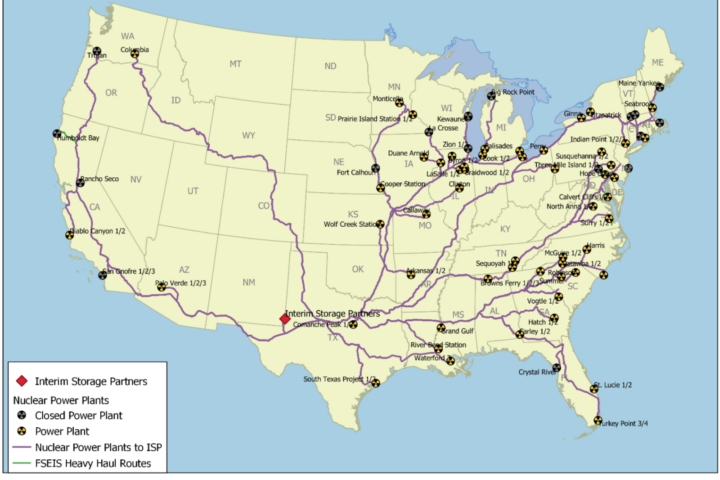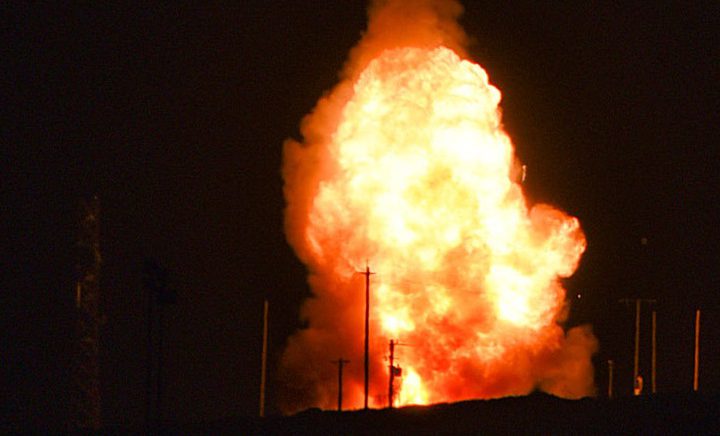Despite the hyperbole from both Trump and Kim Jong Un, nuclear war can be avoided. This not an argument for complacency, but rather to get it right.
Perhaps the silver lining in the crisis with North Korea can be that that the focused attention of the peoples of the world will rise to demand brakes on nuclear weapons, as it did to great effect in the 1980’s. But now we finally have an international treaty banning nuclear weapons, just like chemical and biological weapons. It won’t be easy, but let’s roll up our sleeves and get the job done!
North Korea’s “not quite” ICBM can’t hit the lower 48 states
Theodore A. Postol, Markus Schiller, Robert Schmucker
From the point of view of North Korean political leadership, the general reaction to the July 4 and July 28 launches could not have been better. The world suddenly believed that the North Koreans had an ICBM that could reach the West Coast of the United States and beyond. But calculations we have made—based on detailed study of the type and size of the rocket motors used, the flight times of the stages of the rockets, the propellant likely used, and other technical factors—indicate that these rockets actually carried very small payloads that were nowhere near the weight of a nuclear warhead of the type North Korea could have, or could eventually have. These small payloads allowed the rockets to be lofted to far higher altitudes than they would have if loaded with a much-heavier warhead, creating the impression that North Korea was on the cusp of achieving ICBM capability.
In reality, the North Korean rocket fired twice last month—the Hwasong-14—is a “sub-level” ICBM that will not be able to deliver nuclear warheads to the continental United States. Our analysis shows that the current variant of the Hwasong-14 may not even be capable of delivering a first-generation nuclear warhead to Anchorage, Alaska, although such a possibility cannot be categorically ruled out. But even if North Korea is now capable of fabricating a relatively light-weight, “miniaturized” atomic bomb that can survive the extreme reentry environments of long-range rocket delivery, it will, with certainty, not be able to deliver such an atomic bomb to the lower 48 states of the United States with the rocket tested on July 3 and July 28.
….
We emphasize at this point that advances in rocketry demonstrated by North Korea in the Hwasong-14 are significant, and although the Hwasong-14 is not an immediate threat to the continental United States, variants that are almost certainly now under development, but probably years away from completion, will eventually become missiles with sufficient payloads to deliver atomic bombs to the continental United States.
…
General conclusions—for now. Our general conclusions from intensive study of a wide variety of data relating to the two rockets that North Korea launched in July:
- The Hwasong-14 does not currently constitute a nuclear threat to the lower 48 states of the United States.
- The flight tests on July 4 and 28 were a carefully choreographed deception by North Korea to create a false impression that the Hwasong-14 is a near-ICBM that poses a nuclear threat to the continental US.
- The Hwasong-14 tested on July 4 and 28 may not even be able to deliver a North Korean atomic bomb to Anchorage, Alaska.
- Although it is clear that North Korea is not capable of manufacturing sophisticated rocket components, their skill and ingenuity in using Soviet rocket motor components has grown very substantially. This is not good news for the long run.
It is time for the United States to get serious about diplomacy and appropriate defensive preparations (see sidebar, “Comments on the developing situation with North Korea”) to constructively support those diplomatic efforts.


